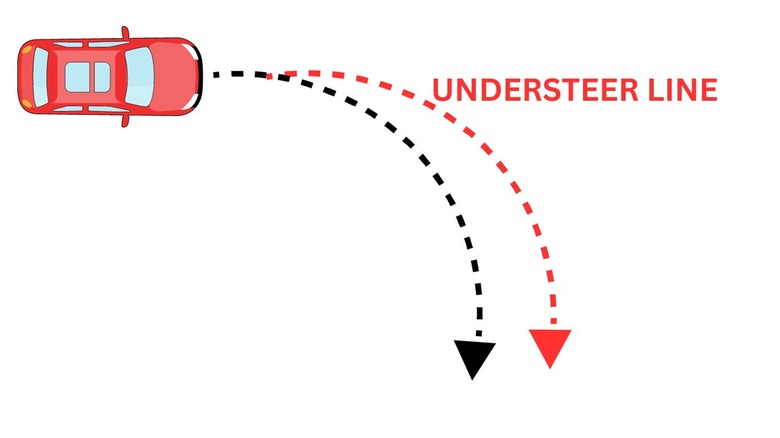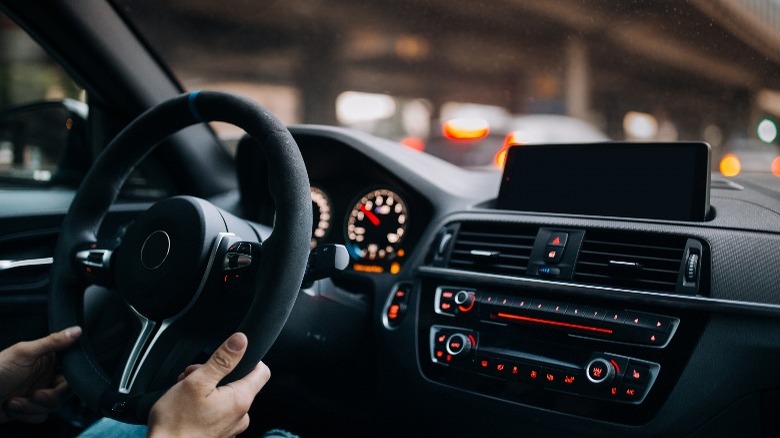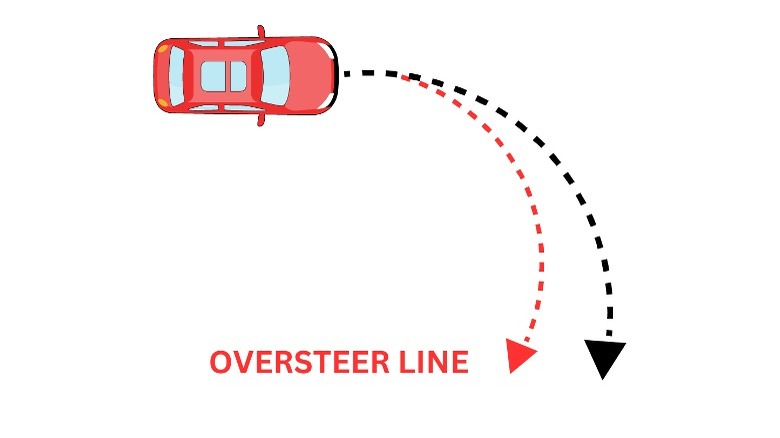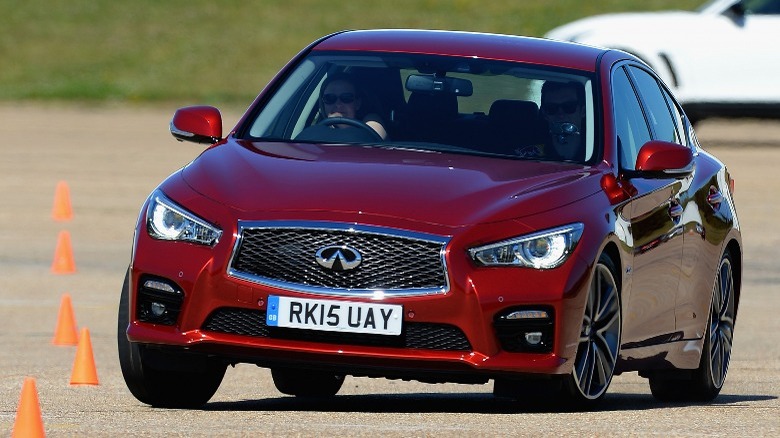What Is Understeer And Oversteer In Handling?
Experienced drivers know that crazy numbers in horsepower and torque alone won't cut it. Sure, a beefy V8 muscle car like the Dodge Challenger SRT Demon 170 can dominate the quarter-mile track like no other production vehicle. However, when you introduce tight corners on a circuit, things start to change. Handling and accurate steering are critical aspects of a vehicle's performance. Moreover, a lot of the finesse and driving skills that determine a driver's abilities are related to handling the car on something more than just a straight line.
Understeering and oversteering are some of the most critical phenomena in handling. Depending on a car's drivetrain configurations and the driver's skills, entering and exiting a corner might not go as planned. Knowing what is happening in such scenarios and what has caused the inaccuracy in executing a correct turn is vital to saving the situation and avoiding crashes. On the other hand, not being familiar with the nature of the car and panicking usually leads inexperienced drivers to take measures that only worsen the situation.
We'll explore everything you need to know about safely recovering from understeer and oversteer should they occur. But before that, we must define terms and what can cause understeer and oversteer.
What is understeer and what causes it?
In simple terms, understeer refers to the car turning less than the amount of steering the driver applies in a corner. Between understeer and oversteer, understeer is less dangerous since it is more predictable and, therefore, easier to correct.
Understeer is a phenomenon that predominantly happens with front-wheel-drive cars or AWD configurations with a front-biased axle. In FWD cars, front wheels have a lot of tasks they need to handle simultaneously. They control the vehicle's acceleration and direct it in turns.
When entering a corner with excessive speed and acceleration, the front tires lose grip, resulting in less traction with the road. Because of this, the front tires slide over the road surface and lead the car in a straighter than desired line. How much speed is too much for a corner heavily depends on your car, the corner angle, and the road quality. Even 20 mph to go around a square on a rainy day can be too much for some FWD cars.
A similar scenario can happen when you brake too hard when entering a corner in a FWD vehicle. The sudden decrease in acceleration can make the front tires slide on the road without being able to maneuver the car in the desired direction.
How do you correct understeering?
Before we get into how to fix such a scenario, let's go through what you must avoid doing. Typically, most inexperienced drivers instinctively try to fight understeer by turning the steering wheel in the desired direction even more. Doing so will only add more steering lock-up, which increases what's known as slip angle. Because of this, the tires will have less contact with the road, slip more, and ultimately worsen the situation.
Another common mistake is completely lifting off the throttle, hoping to regain control by dramatically decreasing the vehicle's speed. As you slow down on acceleration, the car's weight is shifted to the front axle, making the rear end very light and potentially causing the car to spin on its front axis. Although it will stop the car from understeering, it will introduce another equally dangerous problem: oversteering. This phenomenon is referred to as lift-off oversteer.
Instead, you should try to reduce acceleration gradually. How slow you have to do so to avoid lift-off oversteering depends on your car and the road conditions. Moreover, try to reduce the amount of steering you're applying slowly until you feel the tires have regained grip with the road, then try to turn in the desired direction.
What is oversteer and what causes it?
Oversteering is when a car's rear end slips out of the direction it is going in a corner and makes the car slide sideways. A perfectly executed oversteer on the track is a very satisfying feeling for experienced drivers. However, uncontrolled and unintended oversteer can be as disastrous as understeer, if not more.
Typically, oversteer is associated with rear-wheel drive cars. However, as mentioned, FWD vehicles can experience it as well in the form of a lift-off oversteer. Inexperienced drivers are far more likely to face unintended oversteering in performance-oriented RWD cars. This is why you might have seen several videos of Ford Mustangs spinning out when the driver tries to show off by accelerating too quickly.
The most common reason for oversteering is entering a corner with too much throttle, resulting in the rear tires spinning up and beginning to slide. This is more prominent in cars with a limited-slip differential (LSD) since both tires can spin off at the same speed and limit traction. Another cause for oversteering can be entering a corner with too low of a gear, leading the tires to lock up. If your gear is too low and your car's RPM redlines, the abrupt drop in acceleration shifts the weight to the front axle, and the car's tail kicks out.
How do you correct oversteering?
Like understeering, the situation can worsen when the driver tries to take dramatic measures to neutralize oversteering in the vehicle. As mentioned before, oversteering usually results from entering a corner with too much speed and throttle. However, a sudden drop in acceleration can make things worse.
In case of an oversteering scenario in a corner, if the driver stomps the brake pedal, the vehicle's weight will shift to the front axle. Less weight on the rear end means less grip and traction for rear wheels. Because of this, the vehicle's tail rotates even more and starts to spin around its axis.
Therefore, you'd want to find the sweet spot in speed reduction to handle an out-of-control oversteering situation. Speed reduction must be enough to put the rear axle back in control but not so much that it lifts too much weight from the rear end.
Tips on enhancing handling
First and foremost, having good tires on your vehicle is a must. It doesn't matter if you're driving an AWD SUV or an RWD sports car; driving on worn-out tires will drastically affect your vehicle's handling. Remember, no amount of driving skills can compensate for bad tires.
If you're driving a rear-wheel drive car, you can enhance the handling by increasing the camber toe-in and softening the rear suspension. You can also install a rear spoiler (rear wing) for better downforce. These upgrades will reduce the chances of unwanted oversteering.
On the other hand, front-wheel drive vehicles can benefit a lot from having softened sway bars, softened spring rates, and increased front camber. Moreover, opting for wider tires and widening the front track can significantly reduce understeering.
Regardless of your vehicle's drivetrain configuration, reducing ride height can also help with traction and tire grip, resulting in more responsive handling in general. Finally, practice having smooth and accurate inputs on the throttle, brakes, and gear shifts to avoid wheel lock-ups and unwanted change of direction.





